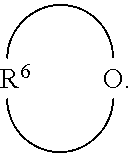Synthesis method of polycarboxylic acid water-reducing agent
- Summary
- Abstract
- Description
- Claims
- Application Information
AI Technical Summary
Benefits of technology
Problems solved by technology
Method used
Image
Examples
embodiments
Embodiment 1
[0056]The monomer is unsaturated carboxylic ester, the chain transfer agent is mercaptan, the initiator is persulfide, and the solvent is water.
[0057]Wherein, the unsaturated carboxylic ester is MPEG1000 methacrylate ester synthesized by the following method:
3.8 mole methacrylic acid and 1 mole Methoxy Polyethlene Glycol (MPEG) 1000 as main reactants, and p-benzenediol and p-hydroxyanisole as polymerization inhibitor are used for esterification catalyzed by concentrated sulfuric acid to get MPEG1000 methacrylate ester. After the esterification, the concentration is diluted by water to 82%, in this concentration the macromonomer can remain liquid state at normal temperature.
[0058]The chain transfer agent of mercaptan is thioglycollic acid and the initiator of persulfide is ammonium persulfate in this embodiment, as an example.
[0059]At room temperature, 232 portions of MPEG1000 methacrylate ester whose solid content is 82%, 650 portions of water and 4 portions of thioglyco...
embodiment 2
[0062]The monomers are unsaturated carboxylic ester, unsaturated carboxylic acid, unsaturated amide, and sulfonate containing unsaturated group. Wherein, the unsaturated carboxylic ester is MPEG1000 methacrylate ester, the nsaturated carboxylic acid is methacrylic acid, the unsaturated amide is methacrylate amide, and the sulfonate is 2-acrylamido-2-methyl-propanesulfonic acid, as an example.
[0063]2.8 mole methacrylic acid and 1 mole MPEG1000 as main reactants, and p-benzenediol and p-hydroxyanisole as polymerization inhibitor are used for esterification catalyzed by concentrated sulfuric acid to get MPEG1000 methacrylate ester. After the esterification, the concentration is diluted by water to 82%, in this concentration the macromonomer can remain liquid state, at normal temperature.
[0064]At room temperature, 190 portions of MPEG methacrylate ester whose solid content is 82%, 650 portions of water, 30 portions of methacrylic acid, 1 portions of methacrylate amide, 10 portions of 2-...
embodiment 3
[0066]The monomers are unsaturated polyether and unsaturated carboxylic acid such as isobutylene alcohol-polyoxyethylene (50) ether and acrylic acid, the chain transfer agent is a mixture of two mercaptans such as thiohydracrylic acid and octyl mercaptan, and the accelerator is carboxylic acid such as glycine.
[0067]The isobutylene alcohol-polyoxyethylene (50) ether containing long chains and having a high molecular weight is solid monomer, so that, the monomer can be added into a solvent after melting or added into a solvent directly, and then stirring to be fully dissolved, in order to blend the reactants well.
[0068]At room temperature, 360 portions of isobutylene alcohol-polyoxyethylene (50) ether (solid plate), 550 portions of water are added into a 1.5 L plastic reactor and stirring to be dissolved. The isobutylene alcohol-polyoxyethylene (50) ether can be dissolved in a part of hot water, in order to get a quick dissolution, and when the isobutylene alcohol-polyoxyethylene (50)...
PUM
| Property | Measurement | Unit |
|---|---|---|
| Temperature | aaaaa | aaaaa |
| Temperature | aaaaa | aaaaa |
| Fraction | aaaaa | aaaaa |
Abstract
Description
Claims
Application Information
 Login to View More
Login to View More - R&D
- Intellectual Property
- Life Sciences
- Materials
- Tech Scout
- Unparalleled Data Quality
- Higher Quality Content
- 60% Fewer Hallucinations
Browse by: Latest US Patents, China's latest patents, Technical Efficacy Thesaurus, Application Domain, Technology Topic, Popular Technical Reports.
© 2025 PatSnap. All rights reserved.Legal|Privacy policy|Modern Slavery Act Transparency Statement|Sitemap|About US| Contact US: help@patsnap.com



